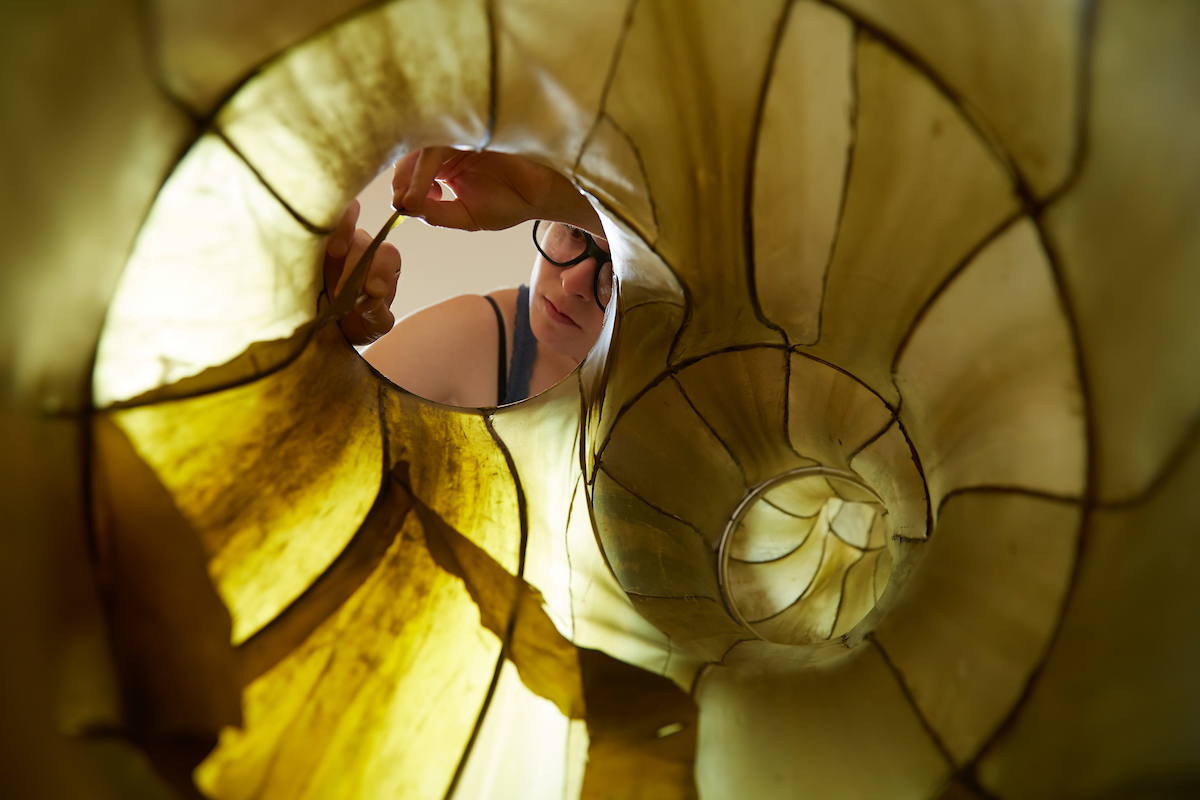Cooper Hewitt, Smithsonian Design Museum has announced that a special exhibition, “Partnering with Nature,” will be on view at the World Economic Forum’s 50th Annual Meeting, Jan. 21 through Jan. 24 in Davos-Klosters, Switzerland. Drawing from the “Nature—Cooper Hewitt Design Triennial” exhibition originally organized by Cooper Hewitt and Cube design museum, this adaptation is a collaboration between the Smithsonian and the World Economic Forum (WEF). This is the fourth year that the Smithsonian and the WEF have collaborated on bringing an exhibition to the Annual Meeting in Davos. Installed in the Congress Centre, the exhibition will be offered alongside panels, workshops and other sessions organized by the WEF that address the ecological crisis and the Forum’s major focus on sustainability.
“A global platform for design, Cooper Hewitt is delighted to once again collaborate with the World Economic Forum and highlight the power of design to address the most significant environmental issues of our time,” said Caroline Baumann, director of the museum. “Through this powerful, interactive exhibition, Cooper Hewitt will invite leaders to rethink our relationship to nature and jumpstart the dialogue on sustainability practices on an international scale.”
Four installations will encourage participants to play with natural elements, learn about the symbiotic relationships in nature and be inspired to imagine a more cohesive approach to working with nature.
The works on view include:
- Department of Seaweed Prototyping Workshop, 2019–20. Founded by Julia Lohmann in 2013, the Department of Seaweed brings together experts in design, science and craft to experiment with the fabrication processes and material properties of seaweed and explore possible applications of this plentiful and renewable resource. For the installation at Davos, Lohmann will create a seaweed structure, Hidaka-Ohmu, and have available living seaweed and a display of hanging, dried seaweed to show the materials used in the craft process. Participants will work with seaweed in a workshop with Lohmann’s team.
- Tree of 40 Fruit, 2008–ongoing. Artist Sam Van Aken collapses an orchard of fruit trees into a single tree using centuries-old grafting techniques. Van Aken worked with Fructus, the Swiss Association for the Protection of Fruit Heritage, to identify, collect and graft 40 apple varieties onto a 6-year-old tree. The varieties originated, are historically grown, or are important commercial varieties in Switzerland. Van Aken maps the tree grafts with hand-drawn sketches that are color-coded to each blossom’s season. Participants will be invited to try bench grafting—a technique where scionwood is grafted to root systems to create new trees.
- Totomoxtle, 2017–ongoing. Totomoxtle means “corn husk” in the Nahuatl language and refers to the brilliantly colored veneers made from native Mexican corn by designer Fernando Laposse. Since 2017, Laposse has collaborated with farmers, agronomists and scientists to reintroduce native varieties of corn that were decimated by industrial farming. The initiative has led to local job growth, a resurgence of craft and food traditions, and restoration of indigenous farming practices. Participants will join in the completion of a mosaic.
- Algae Platform, 2019–20. Developed by Atelier Luma, a think-tank, workshop and space for research, production and learning, the Algae Platform investigates the potential of algae as an alternative material to plastic with many possible applications in the architecture and design field. Algae is a globally renewable resource that is found in natural, urban and industrial landscapes, and can be 3-D printed into vessels and extruded into filaments for textiles.
Related programming includes presentations by the designers in the Hub, followed by hands-on workshops. On Jan. 21, the designers from the Algae Platform and the Department of Seaweed will share the creative process of turning unwanted natural materials into art and everyday objects. On Jan. 23, the artists behind the Tree of 40 Fruit and Totomoxtle will discuss what ancient agricultural techniques can teach people about caring for the land. Additional programming during the series includes a Design by Nature session, Jan. 24, featuring Baumann in conversation with Netherlands-based artist and innovator Daan Roosegaarde who explores breakthrough ideas that bring nature and humans together in a sustainable way.
about cooper Hewitt, smithsonian design museum
Cooper Hewitt is America’s design museum. Inclusive, innovative and experimental, the museum’s dynamic exhibitions, education programs, master’s program, publications and online resources inspire, educate and empower people through design. An integral part of the Smithsonian Institution—the world’s largest museum, education and research complex—Cooper Hewitt is located on New York City’s Museum Mile in the historic, landmark Carnegie Mansion. Steward of one of the world’s most diverse and comprehensive design collections—over 210,000 objects that range from an ancient Egyptian faience cup dating to about 1100 BC to contemporary 3-D-printed objects and digital code—Cooper Hewitt welcomes everyone to discover the importance of design and its power to change the world. Cooper Hewitt knits digital into experiences to enhance ideas, extend reach beyond museum walls and enable greater access, personalization, experimentation and connection. The museum is fully accessible.
For more information, visit www.cooperhewitt.org or follow @cooperhewitt on Instagram, Facebook, Twitter and YouTube.
about The world economic forum
The World Economic Forum engages the foremost political, business, cultural and other leaders of society to shape global, regional and industry agendas. The World Economic Forum’s Annual Meeting brings together over 3,000 participants from governments, international organizations, business, civil society, media and culture from all over the world. The theme of the 50th annual meeting in Davos is Stakeholders for a Cohesive and Sustainable World.
#
